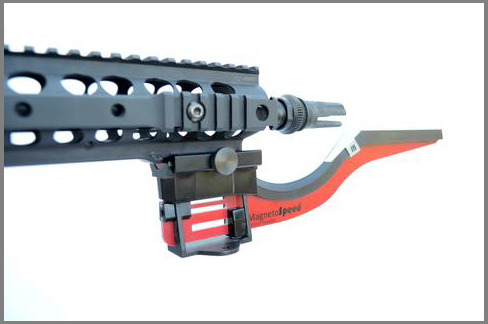Improving longer-range accuracy has a lot to with consistent bullet velocities. First comes understanding it! Here’s a start on it… KEEP READING
Glen Zediker
It’s springtime (finally) and one of the things on your list might be working up a load for a new rifle, or new bullet. I’ve talked about testing processes and procedures, and also some about those bullets, and especially those with higher ballistic coefficients. The more aerodynamic bullet, by itself, is no guarantee of a smaller group (and whether you’re shooting one shot or 20 shots, you’re always shooting a group…).
To make the “magic” of a high-BC bullet come to life, they all need to be arriving at the destination at really close to the same speed. On target, that’s all about elevation consistency. It’s pretty commonly accepted among long-range competitive shooters that points losses come more from errant high and low impacts than from missed wind calls. High-BC bullets traveling at more consistent speeds reduces dispersions in all directions. But only if they’re traveling at consistent velocities!
The first step to improving velocity consistency is getting a good way to measure it. That there would be a chronograph. Nowadays especially, there are a number of simple-to-use and inexpensive chronographs available, that are accurate. Some have more features, which mostly revolve around providing printouts, digital records, and calculations, but what matters most (to me at least) is one that lets me easily read the velocity of each shot.
Check Misdouth offerings HERE

So. What’s next is understanding the terms associated with this area of data-gathering.
“Standard deviation” (SD) is the most common measure of shot-to-shot consistency. It reflects on the SD reflects on the anticipated consistency of bullet velocities (some number of recorded velocities). The “standard” part reflects on a sort of an average of the rounds tested.
[Phrases like “sort of” upset mathematically-oriented folks, so here’s the actual definition: SD is the square root of the mean of the squares of the deviations. More in a bit.]
I pay less attention than many to standard deviation because: I don’t think standard deviation is near as important as is the “range,” which is the lowest and highest speeds recorded. Another that matters is “extreme spread,” which, by definition, is the difference between this shot and the next shot. I watch the speed on each shot. I compare this one to the next one and to the last one, and, as said, find the highest and the lowest.
Why? Well because that’s how I shoot tournament rounds. This one, then another, and another. A low velocity difference means that the accuracy of my judgment of my own wind call has some support.

A load that exhibits a low SD is not automatically going to group small, just because a low SD. I’ve had Benchrest competitors tell me that sometimes their best groups don’t come with a low-SD load, but do not apply that to greater distance! At 100 yards a bullet’s time of flight and speed loss are both so relatively small that even what some might call a big variation in bullet velocities (+/-25 fps or so) isn’t going to harm a group, not even the tiny groups it takes to be competitive in that sport. On downrange, though, it really starts to matter. (And keep in mind that “it” is a reference to velocity consistency, whether denoted by SD or otherwise.)
For an example from my notes: Sierra 190gr .308 MatchKing. Its 2600 fps muzzle velocity becomes 2450 at 100 yards and 1750 at 600 yards. (These numbers are rounded but serve for a example.)
If we’re working with a just awful 100 fps muzzle velocity change, that means one bullet goes out at 2550 and the next leaves at 2650, in the worst-case. The first drifts about 28 inches (let’s make it a constant full-value 10-mph wind to keep it simple) and the next slides 26 inches. But! Drop… That is THE factor, and here’s where inconsistent velocities really hurt. With this 190, drop amounts over a 100 fps range are about three times as great as drift amounts. This bullet at 2600 muzzle velocity hits 5-6 inches higher or lower for each 50 fps muzzle velocity difference. That’s going to cost on target, big time. And it gets way, way (way) worse at 1000 yards. Velocity-caused errors compound on top of “normal” group dispersion (which would be group size given perfect velocity consistency). Now, it’s unusual for a wind to be full-value and dead constant, so on-target left and right displacement is even relatively less — but elevation displacement is consistent regardless.
So, my 100 fps example is extreme, but half of that, or a quarter of that, still blows up a score, or an important hit on a target.

So what’s a tolerable SD? 12. There have been, rest assured, much calculation to lead up to that answer. That’s the SD that “doesn’t matter” to accuracy, meaning it’s not going to be the leading factor in a miss. It’s more than I’ll accept for a tournament load, but for those I’m looking for an extreme spread never more than 10 fps (the range might be higher, but now we’re just mincing terms). More later…
The information in this article is from Glen’s newest book, Top-Grade Ammo, available HERE at Midsouth. Also check HERE for more information about this and other publications from Zediker Publishing.









